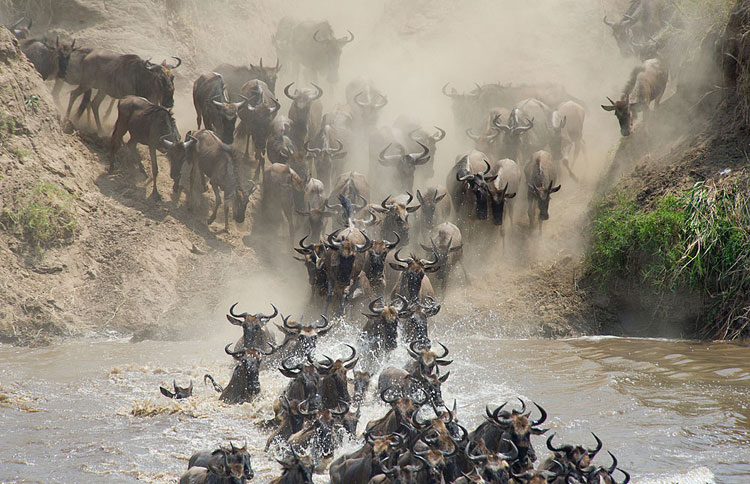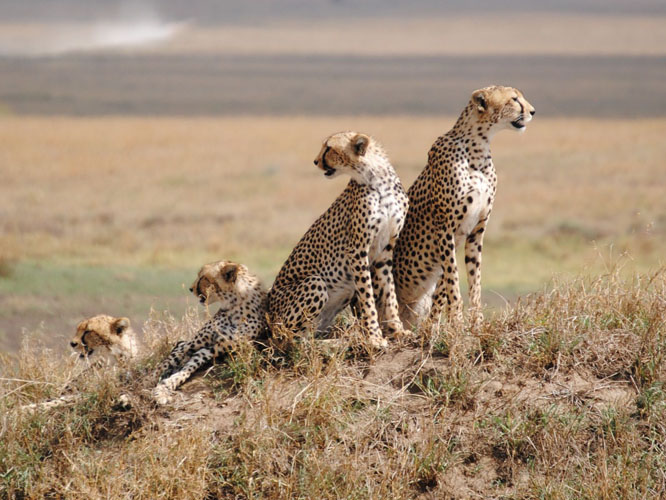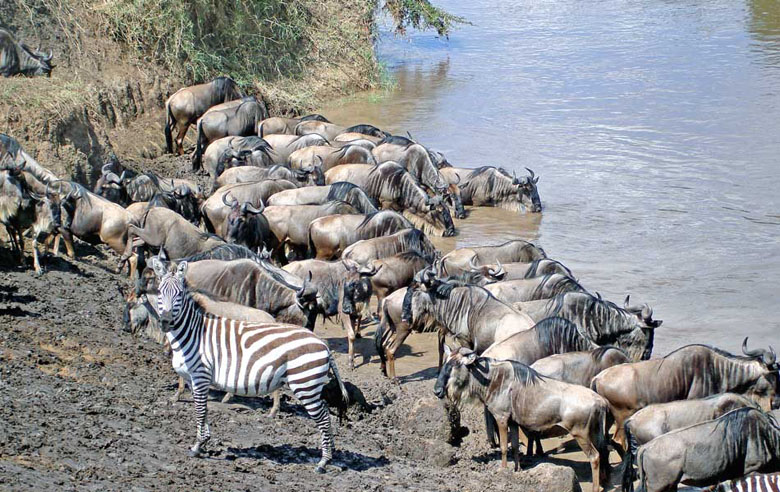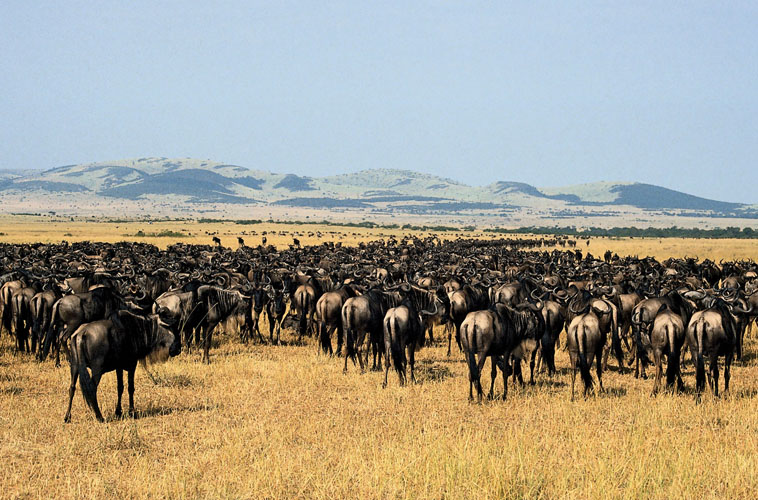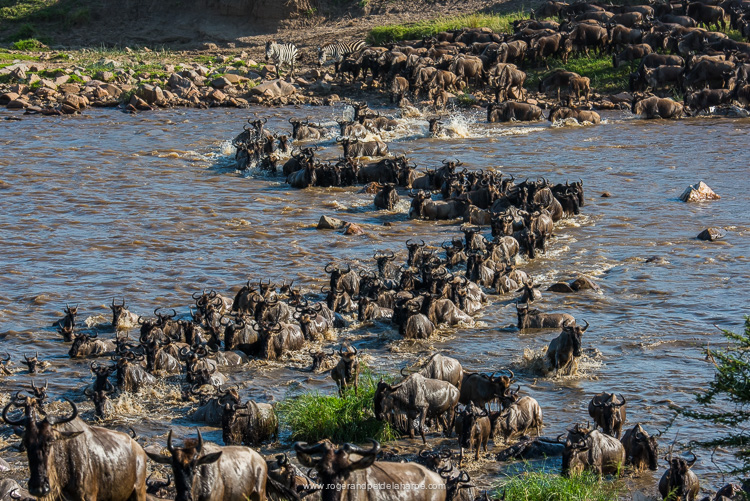SAFARIS :: SERENGETI NATIONAL PARK
The name Serengeti comes from the Maasai language and appropriately means an endless plains. The National Park is as big as Northern Ireland, but its ecosystem, which includes the Ngorongoro Conservation Area, the Maswa Game Reserve and the Maasai Mara Game reserve (in Kenya). It lies between the shores of Lake Victoria in the west, Lake Eyasi in the south, and the Great Rift Valley to the east. As such, it offers the most complex and least disturbed ecosystem on earth. A unique combination of diverse habitats enables it to support more than 30 species of large herbivores and nearly 500 species of birds. Its landscape, originally formed by volcanic activity, has been sculpted by the concerted action of wind, rain and sun. It now varies from open grass plains in the south, savanna with scattered acacia trees in the center, hilly, wooded grassland in the north, to extensive woodland and black clay plains to the west. Small rivers, lakes and swamps are scattered throughout. Rising in the southeast are the great volcanic massifs and craters of the Ngorongoro Highlands. The Serengeti plains are host to a dramatic annual migration of hundreds of thousands of wildebeest and numerous other species of animals indigenous to the area.
